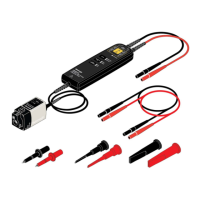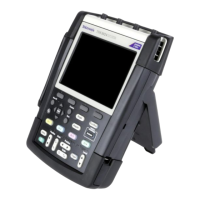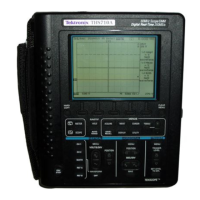Operating Basic
s
Operating Bas
ics
To help you use the high voltage differential p robes safely and effectively, this section provides important information about
safety limits, operating characteristics, and probing techniques.
Operating Characteristics and Probing Techniques
This section explains the operating characteristics of the probes and includes techniques that you can use to maximize the
performanc
e of the probe.
Operating Limits
The probes have two operating ranges that you select with the RANGE button; the ranges differ between probe models.
To keep within the linear measurement region of the probe, select a range that is above the differential voltage that you
are measuring. You c an measure a voltage in the low range that exceeds the low range limit (provided it is within the high
range limit of the probe), but it will overdrive the circuitry of the probe. When this differential overrange occurs, the probe
detects the condition and lights the O VERRANGE indicator. Measurements taken in the lower, m ore sensitive range when
the OVERRANGE indicator is lit are not accurate during the O verdrive Recovery Time (ORT, typically <20 ns, depending
on the p robe type).
Do not attempt to measure a differential voltage that is above the high operating range of the probe. (See Table 3.) Do
not exceed the common mode voltage on either input (+ or – input to ground). (See Table 6 on page 27.) The probe
can be damaged if these limits are exceeded.
Table 3: Differential voltage limits (peak)
Low range High range
Probe m odel Voltage limit Overload trip level Voltage limit Overload trip level
THDP0100 600 V >600 V 6000 V >6000 V
THDP0200 150 V >150 V 1500 V >1500 V
TMDP0200 75 V >75 V 750 V >750 V
The input signals that you attempt to measure must be considered both for the differential potential between each other
and for the amplitude on each input with respect to ground (the common mode voltage specification). T he maximum
common mode voltage limits vary between probes, from 550 V CAT I for the TMDP 0200, to 2300 V CAT I for the T HDP0100
probe. You should consider both s pecifi cations when choosing a probe for your measurement task. Some examples that
illustrate this are shown on the following pages.
THDP0100/0200 & TMDP 0200 High Voltage Differential P robes Instruction Manual 22

